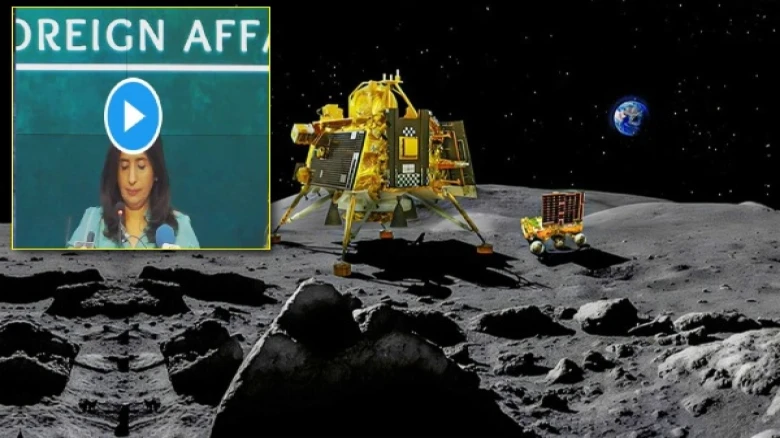India's neighbours were not pleased, since it took Pakistan two days to wish the Indian space agency, while China remains silent...
Digital Desk: After the Indian Space Research Organisation (ISRO) successfully landed a rover on the Moon's south pole, Pakistan finally had time to congratulate India on its historic Chandrayaan-3 Mission.
During a weekly press conference on Friday (August 25), Pakistan's Ministry of Foreign Affairs stated that "India getting to the Moon is a big achievement. We congratulate Indian scientists on achieving this milestone."
The successful landing on the Moon's south pole represented a paradigm leap in space research, not only for India but also for the entire globe. The entire world applauded as the unmanned Chandrayaan-3 touched down, just days after a Russian spacecraft crashed in the same location.
World leaders applauded Indian Prime Minister Narendra Modi, who was attending the BRICS Summit in South Africa. He was pictured beaming as he declared the mission's accomplishment as a triumph that reached beyond the borders of his country.
However, it appears that India's opponents were not pleased, as it took Pakistan two days to wish the Indian space agency, while China's silence remains fully intact.
Adding about ISRO's video release of the rover sliding onto the Moon's surface- On Thursday (August 24), the Pragyan rover slid out of the spaceship and onto the lunar surface to begin exploring the lunar south pole and conducting tests.
On Thursday, S Somanath, the head of ISRO, shared that exploring the Moon's south pole could result in finding water and valuable scientific information. The south pole of the Moon is challenging to land on due to its rugged landscape, but it is of great interest because it is believed to contain water ice that could be used as fuel, oxygen, and drinking water for future missions.

Leave A Comment